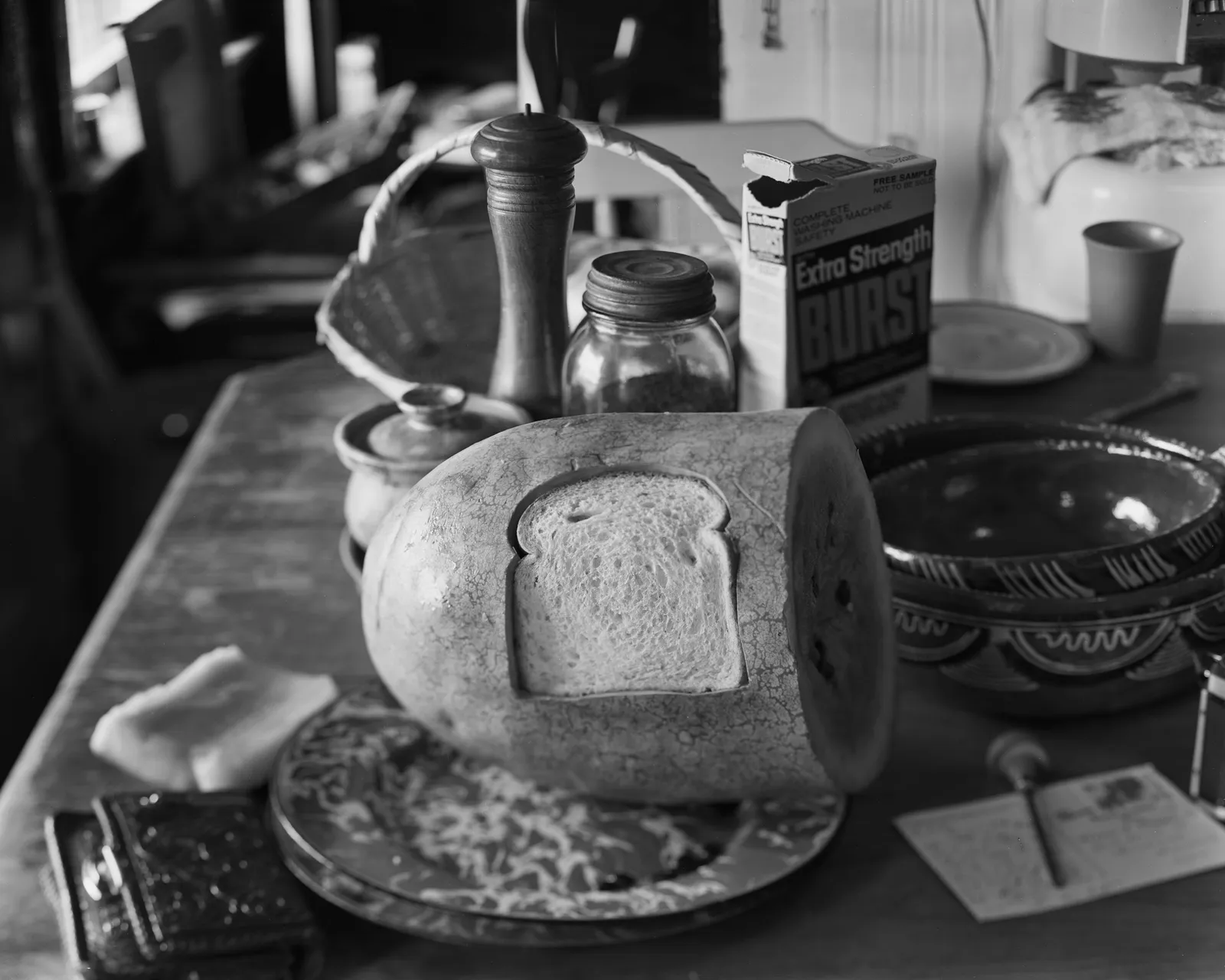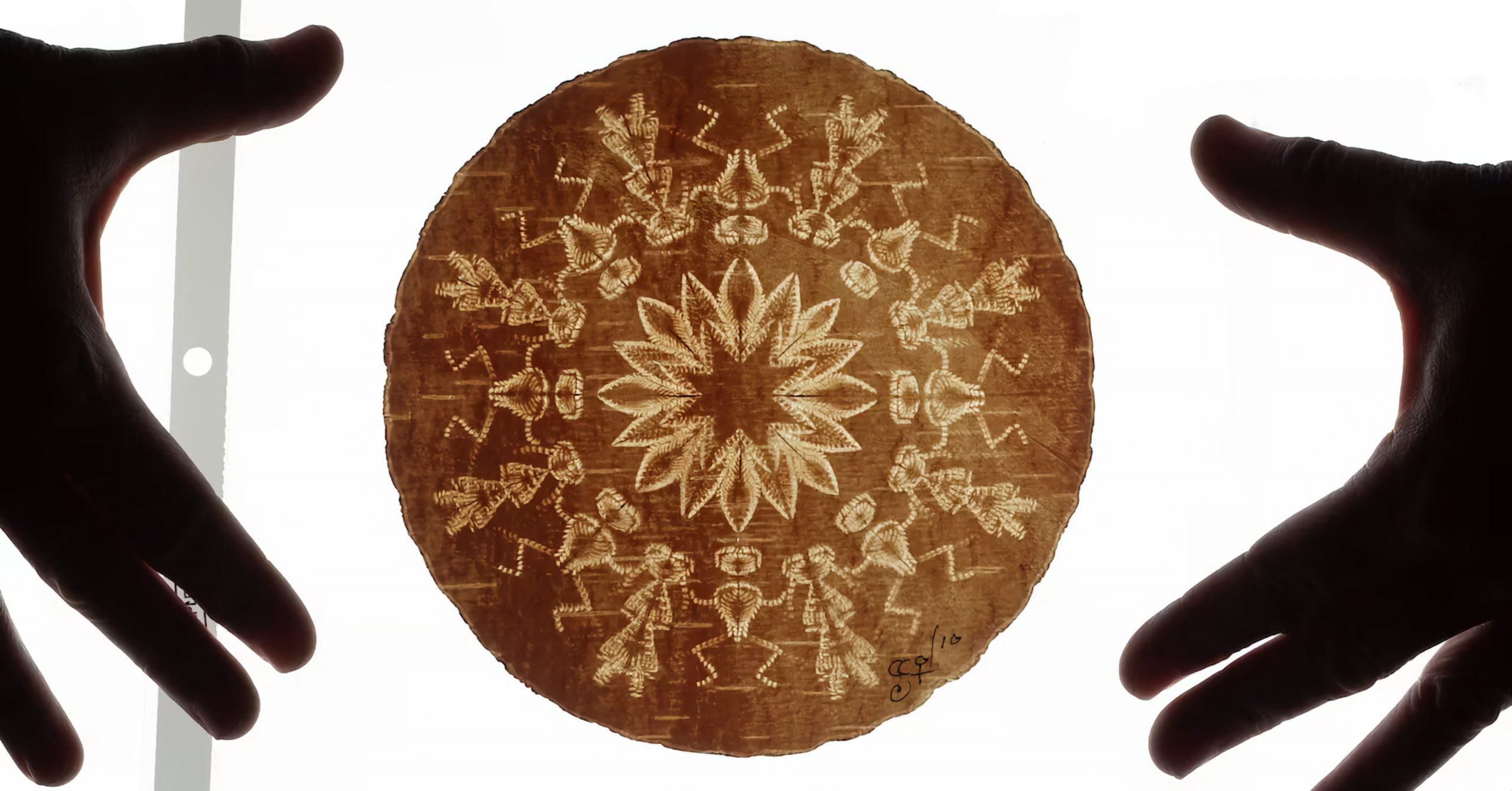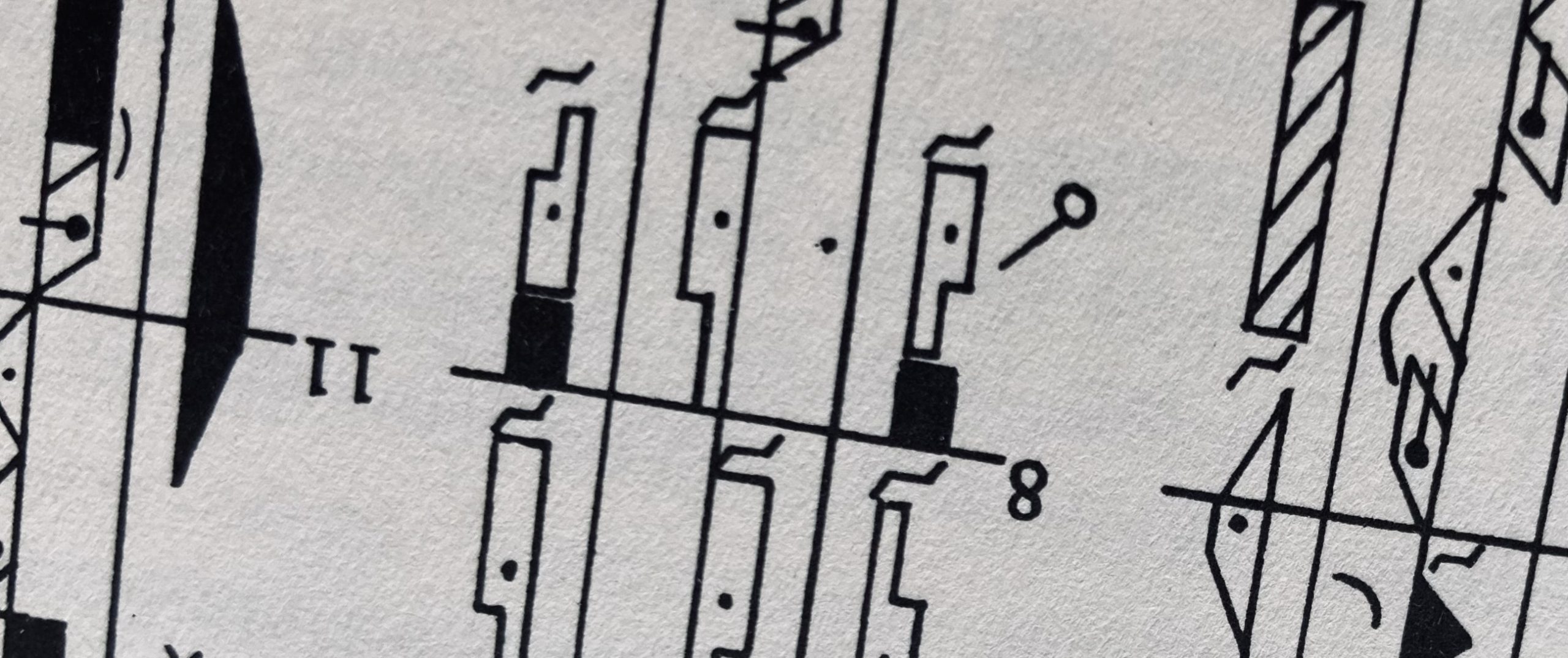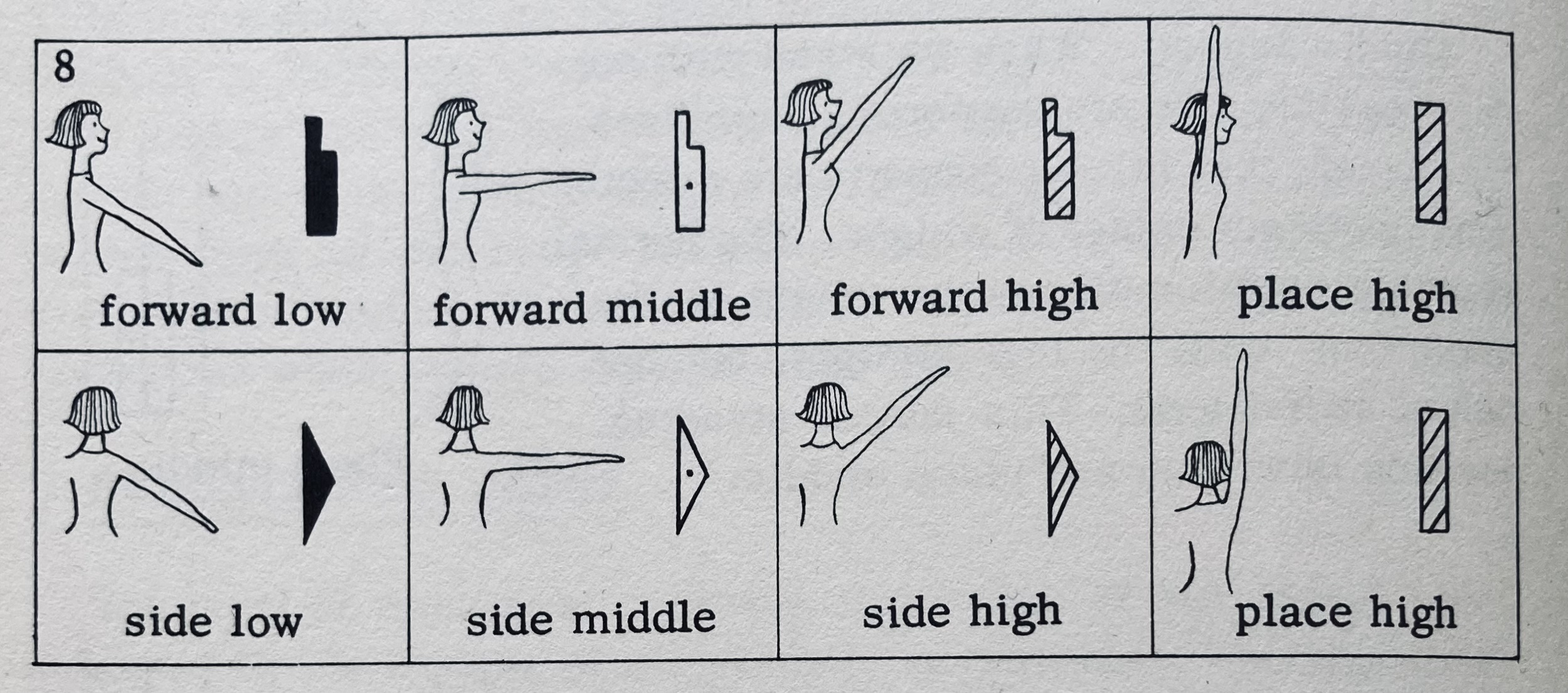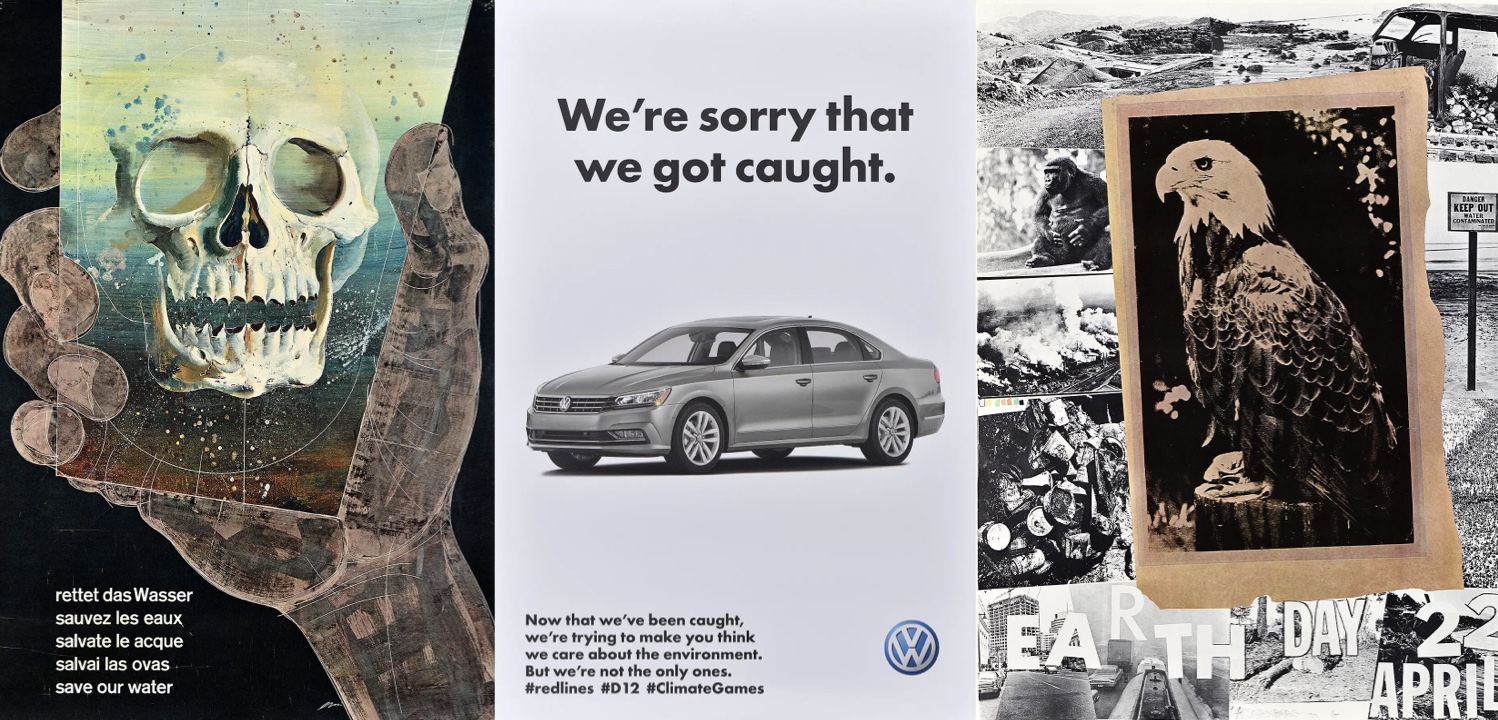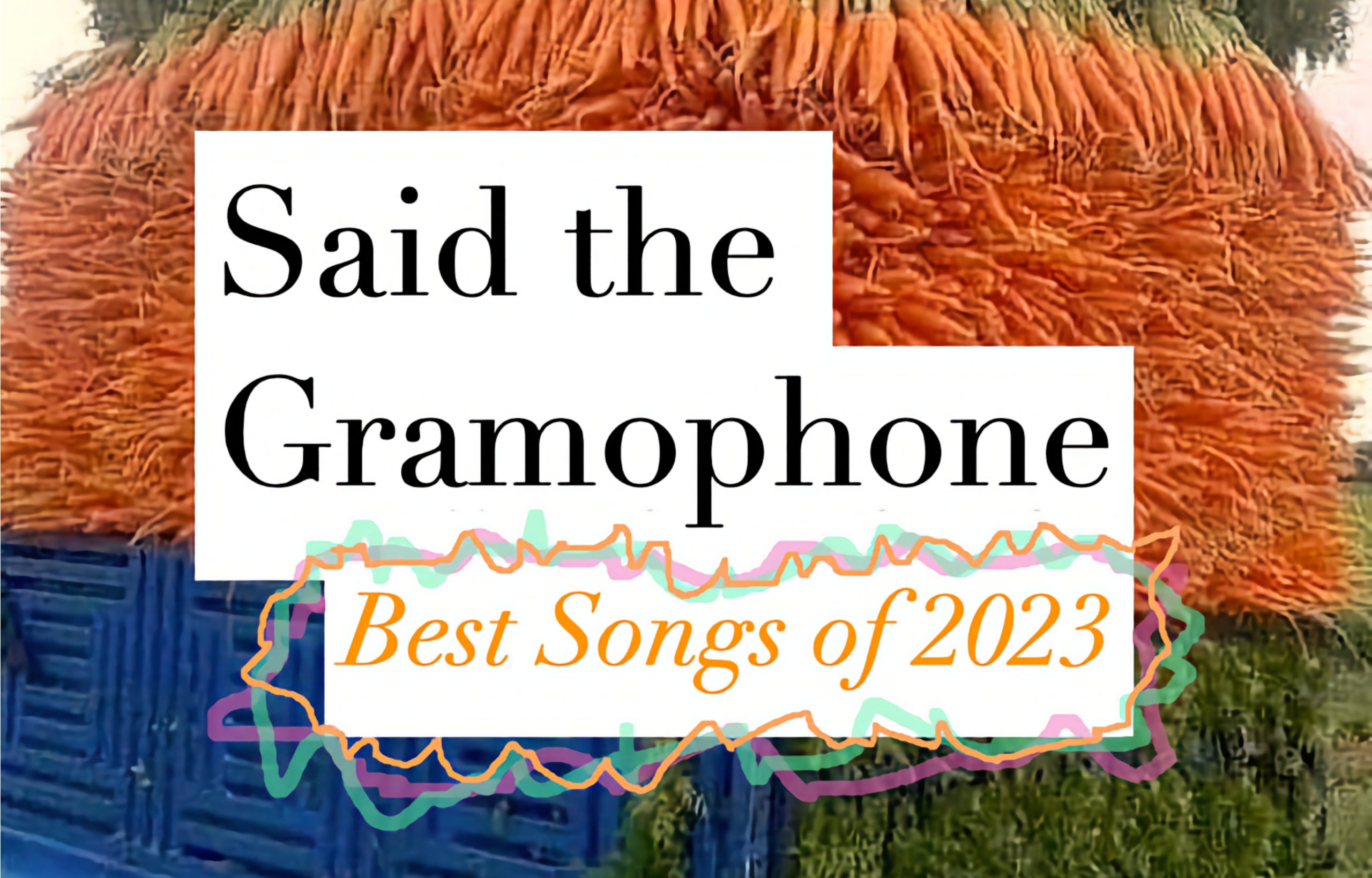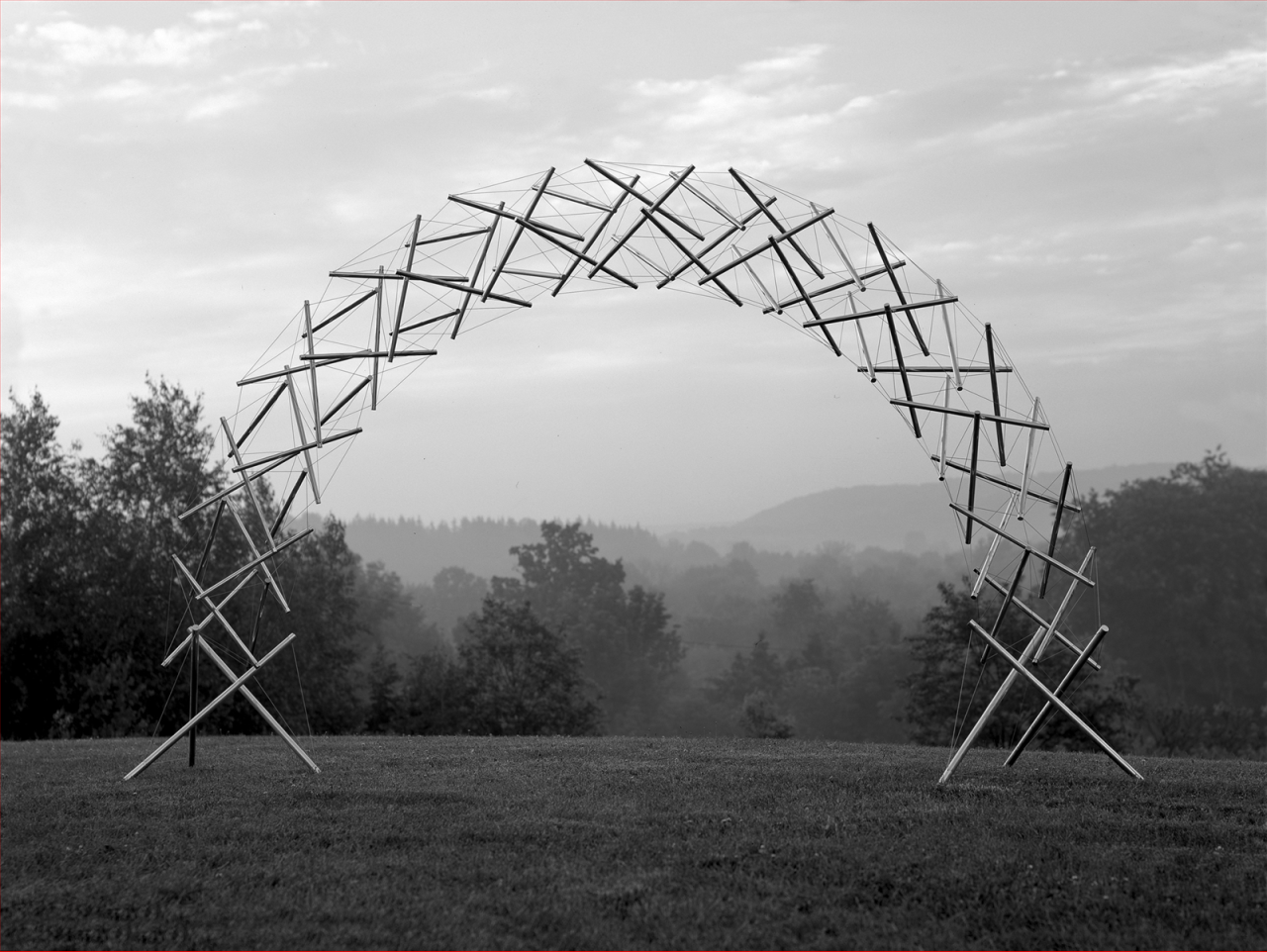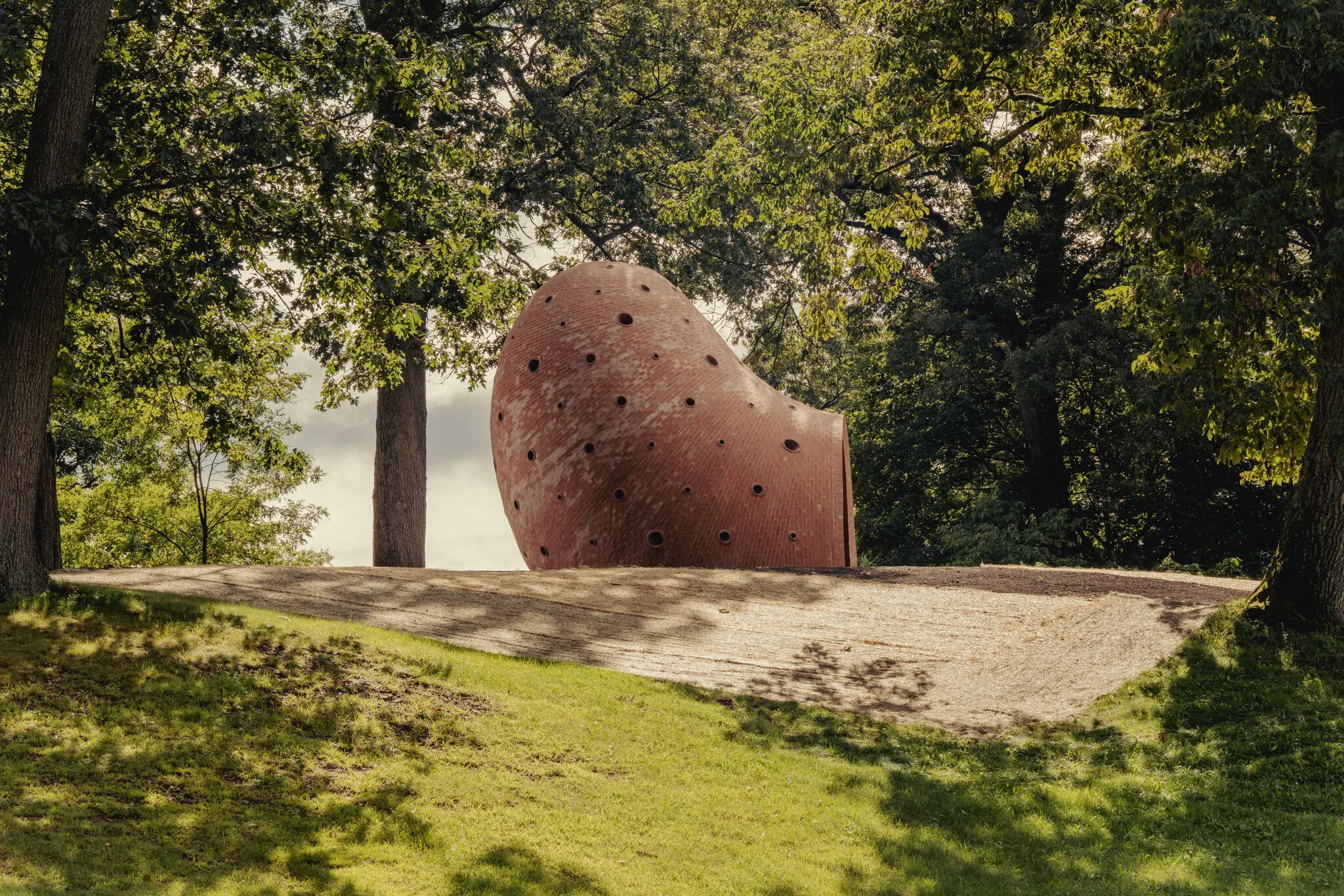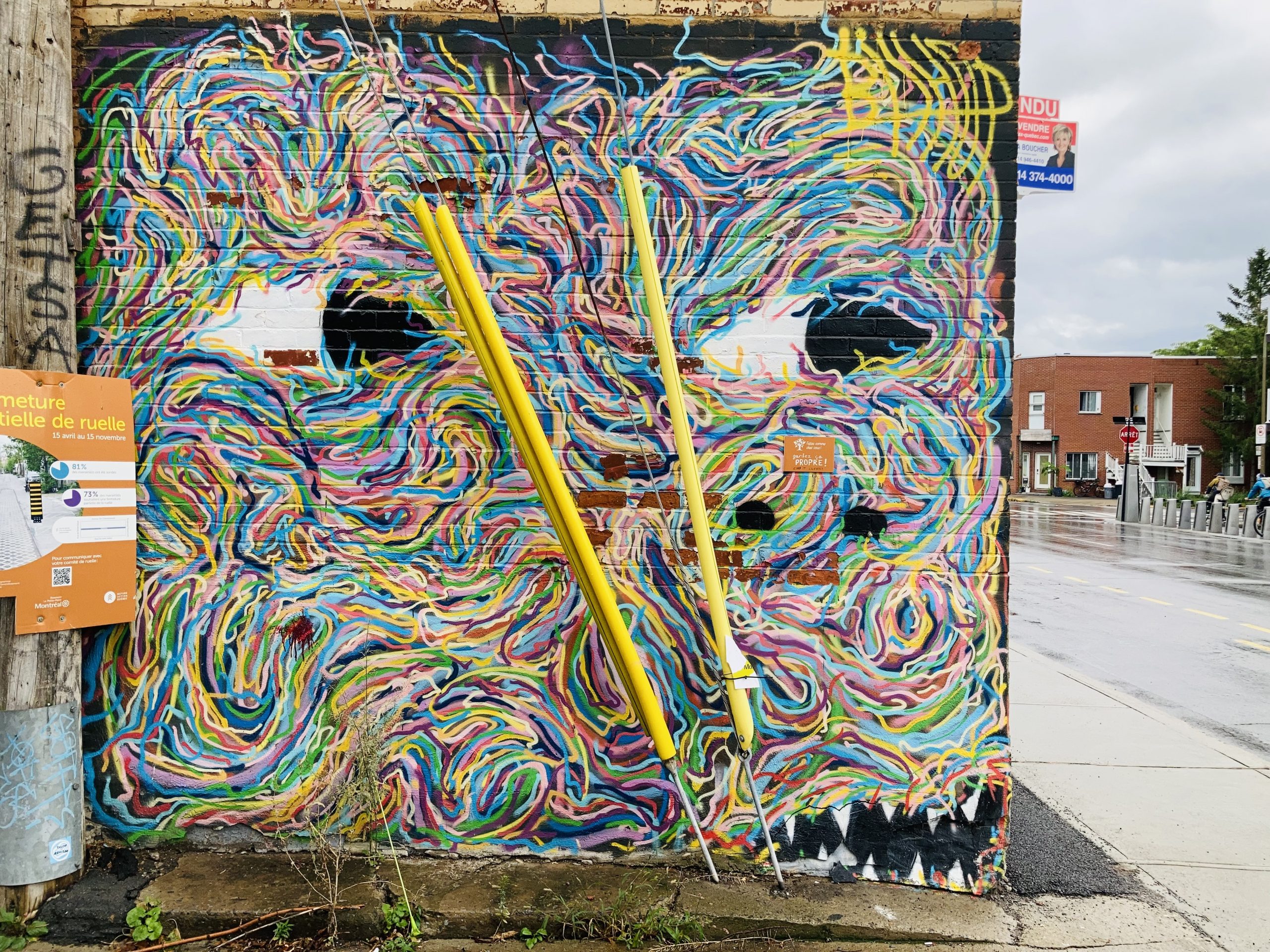Photographs of Robert Cumming
The New Yorker has a nice little profile on Robert Cumming, an absurdist photographer I had never heard about. His pieces are whimsical and silly, like the above piece entitled “Watermelon/Bread”.
As an artist, he was an inveterate tinkerer who, for a period, taught himself a new fabrication skill every year, which would later come in handy when making the props that he used in his photographs. He was stubbornly inquisitive, often following his ideas wherever they led him, even—or especially—if it was impractical or absurd.
Via Rafa
